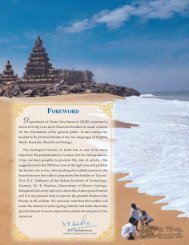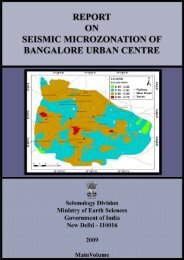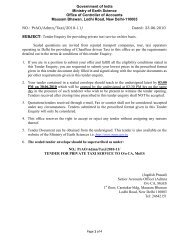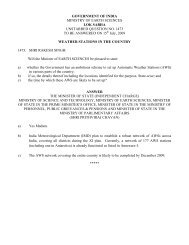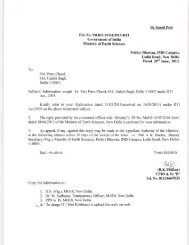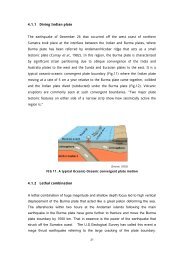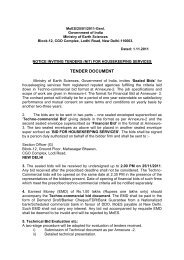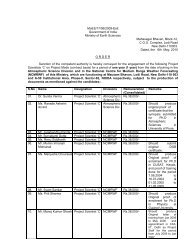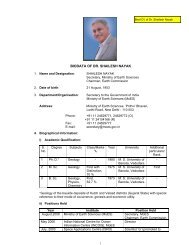Annual Report 2007-2008 - Ministry Of Earth Sciences
Annual Report 2007-2008 - Ministry Of Earth Sciences
Annual Report 2007-2008 - Ministry Of Earth Sciences
Create successful ePaper yourself
Turn your PDF publications into a flip-book with our unique Google optimized e-Paper software.
<strong>Ministry</strong> of <strong>Earth</strong> <strong>Sciences</strong>, <strong>Annual</strong> <strong>Report</strong> <strong>2007</strong>-085.1.3 Deep Sea Demersal Fishery Resources Assessment and BiologyAssessments were made on the basis of surveys of the continental slope area using expo modeland high speed demersal trawl (crustacean version) operations. As many as 222 fishing haulshave been carried-out to delineate fishing grounds suitable for bottom trawling and to assess thefishery resources thereof. Major deep-sea fishing grounds along the continental slope areas offthe west, east and Andaman coasts have been identified. As many as 13 new record of deep-seafish species have been reported through these surveys. Most of these fishes were previouslyreported only from African waters and it seems to be a case of extended distribution of African fishRatfishfauna to the Indian waters. Demersal trawl surveys conducted at 8 pre-determined grounds inAndaman sea during winter monsoon <strong>2007</strong> indicated that during this season the fishery wasdominated by Priacanthus hamrur (22.26 %), followed by Chloropthalmus punctatus (18.26%).5.1.4 Plankton Diversity in Andaman WatersAndaman waters have been data poor area despite their sigficant fishery production whichdepends on plankton and productivity. For the first time, a comprehensive survey of phyto - andzooplankton at spatial and temporal scales have been carried out. The presence of diatomdominatedphytoplankton community during South West Monsoon (SWM), followed bydinoflagellate - dominated community in the inter-monsoon is an interesting observation whichwould help in corroborating fishery resources in this region.Similarly, zooplankton biomass wasrecorded to be very high (110 mL/1000 m 3 ) during the intermonsoon period, which indicated lowpredation of zooplankton by fishes. An atlas on the zooplankton in the Indian waters has beengenerated under the project.5.1.5 Environment and Productivity PatternsThe mechanisms underlying the spatial variations in biological production of the Arabian Sea as aconsequence of the intensity of upwelling and related process and theoretical formulation explaining44




